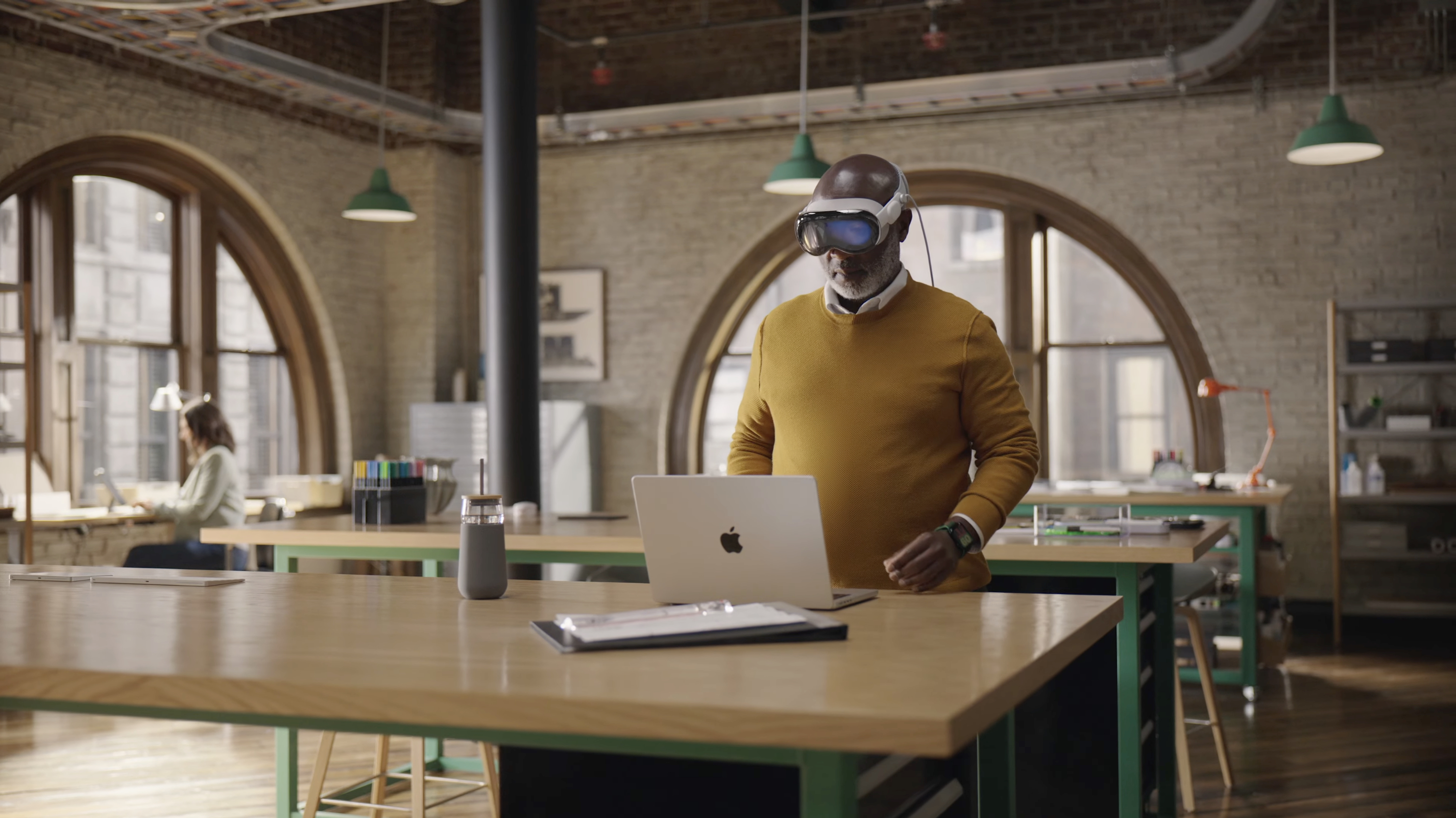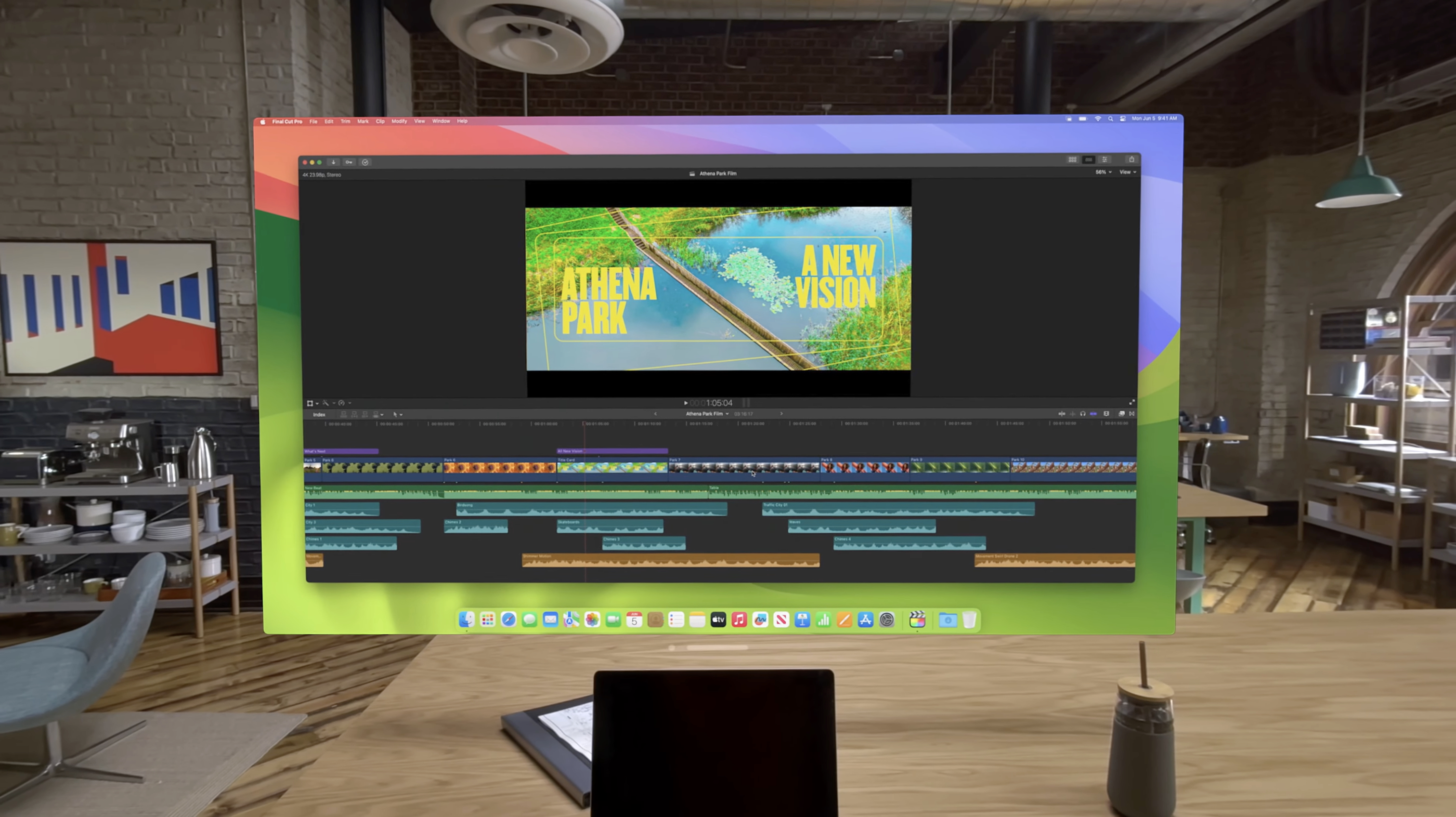
Despite Apple's announcement that Vision Pro will launch on February 2, Apple has yet to expand on the specifics of how the two devices work together. But sift through code and marketing materials, and there are subtle indications about what is possible - and what the limitations are likely to be. Here's what we know.
Mac and Vision Pro: What You Can Do
Create a Virtual Desktop
When it comes to the Mac, the keystone feature of Apple Vision Pro is something called Mac Virtual Display. The system uses AirPlay 2, and allows you to connect your Mac wirelessly to the headset just by looking at your computer through your Vision Pro. According to Apple, this allows you to place and resize a virtual representation of your Mac's display anywhere in space, and "use Vision Pro as an enormous, private, portable 4K display, ideal for pro workflows."
Use visionOS Apps Alongside Your Mac
With Mac Virtual Display enabled, you will be able to able use visionOS apps right alongside your virtual Mac screen. This will allow you to, for example, work on a Final Cut Pro project on an enormous Mac display while also viewing and interacting with separate screens displaying visionOS apps like Photos, Notes, Files, and so on.
Mirror Vision Pro to Mac
Apple Vision Pro supports screen mirroring via AirPlay or FaceTime, according to code found in early beta releases of visionOS, the headset's unique operating system. When wearing Vision Pro, you will be able to select a Mac to mirror content to from the headset, allowing you to share your view with others and reduce any sense of isolation.
Connect Mac Accessories
Vision Pro includes a virtual keyboard for spatial computing sessions, but you can also wirelessly connect Mac accessories to the Vision Pro, including the Magic Keyboard and the Magic Trackpad for more traditional tactile input. Attaching Bluetooth accessories allows for a typical Mac workflow to continue to be used, just with the Mac display replaced by Vision Pro.
Mac and Vision Pro: What You (Likely) Can't Do
Arrange Mac Apps in Virtual Space
Prior to Apple's official unveiling of Vision Pro, many Mac users envisioned an ideal multitasking scenario where it would be possible to break out Mac apps individually in a mixed reality workspace and switch attention between them at a glance. Based on the information available, however, it is not possible to view individual Mac apps in virtual windows alongside one another in Vision Pro's spatial computing environment.
Create Multiple Virtual Displays
Another likely limitation of the first-generation Vision Pro is that it only supports mirroring your Mac's built-in display. In other words, it won't be possible to extend your Mac's screen or recreate a multiple monitor Mac setup in the mixed reality workspace. This could be due to bandwidth limitations (Mac Virtual Display outputs in 4K). On that basis, multiple Mac displays in Vision Pro's spatial computing environment may be something supported in a future version, but don't expect such functionality out of the box.
Connect an Intel Mac
This should probably go without saying, but older Macs based on Intel architecture won't come along for the ride into the spatial computing future. Though Apple hasn't come out and said it officially, only Apple silicon Macs are likely to have the processing horsepower to communicate with Vision Pro, which itself relies on Apple's M2 processor to do the heavy lifting.
Apple Vision Pro and the Future of Mac
As the above suggests, there are still some unknowns about Mac and Vision Pro interoperability. Bearing that in mind, are you optimistic about the future of Mac in the era of spatial computing? What, if anything, disappoints you about Vision Pro support for the Mac? Let us know in the comments.

Apple Vision Pro pre-orders open on Friday, January 19 at 5.00 a.m. PST, and the device goes on sale in the U.S. on Friday, February 2, with availability in Canada and the United Kingdom expected to follow later in the year.
Related Roundup: Apple Vision Pro
Related Forum: Apple Vision Pro
This article, "Your Mac and Apple Vision Pro: What You Can Do (and What You Can't)" first appeared on MacRumors.com
Discuss this article in our forums
source https://www.macrumors.com/2024/01/11/apple-vision-pro-mac-interoperability/



0 Comments